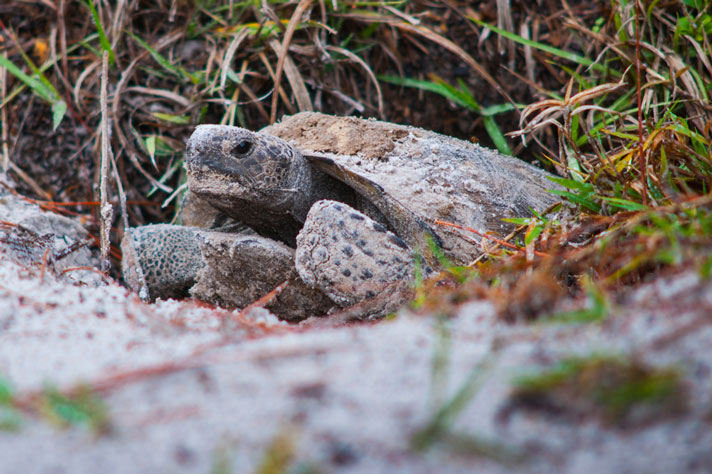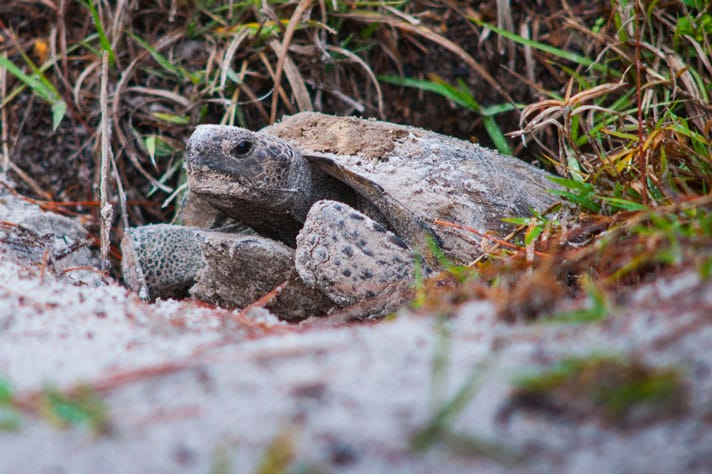More than 300 species rely on the network of tunnels the gopher tortoise creates.
A research paper published by researchers with the University of Southern Mississippi, the Tennessee Aquarium Conservation Institute, Auburn University, University of Georgia and University of South Florida has determined that the gopher tortoise (Gopherus polyphemus), once thought to be of two genetically distinct groups, is actually comprised of five genetically diverse groups.

Matthew Yoder/Shutterstock
A gopher tortoise emerges from its burrow. More than 300 species rely on the network of tunnels the gopher tortoise creates.
The study, published in the Journal of Fish and Wildlife Management, looked to define the genetic population structure of the threatened species by collecting 993 tortoises from 47 sampling sites across the gopher tortoise’s range. The researchers were able to identify, through genetic testing, five distinct groups of the chelonian, based largely on where they were located. The five groups are segmented by the Tombigbee and Mobile rivers, Apalachicola and Chattahoochee rivers, and sections of the Coastal Plains, (Eastern Gulf, Sea Island, and Floridian).
Gopher Tortoise Information
Gopher Tortoise Populations Get Bolstered In Aiken, South Carolina
Beachgoers in Florida Confuse Gopher Tortoises With Sea Turtles
They found genetic differences at the sampling sites around the boundaries of the genetically defined groups, according to the paper, and found additional genetic structure in all five regions.
The researchers are hoping that each of the five genetic groups are treated separately in terms of conservation planning.
The gopher tortoise is considered a keystone species by scientists, due to its burrowing nature, which then helps an estimated 360 other animal species who take advantage of those networks of tunnels. It averages about a foot long and can be found in along the coastal plains of the Southeastern United States, including South Carolina, Georgia, Florida, southern Alabama, Mississippi, and southeastern Louisiana. It dines primarily on grasses in the wild and can eat beans, corn and most fruit. It is protected throughout its range and requires a permit to keep.


